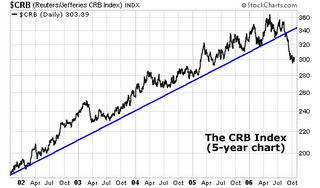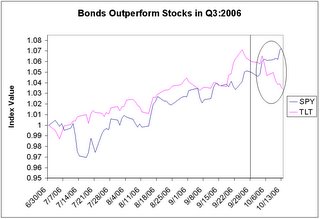Employment Cost Index Up - Bad News for Inflation?
Many, including myself, view the ECI as the "super core" inflation measure since employment is the predominant cost of doing business in our service-based economy. When the ECI runs above the CPI, as it is doing now, it has to raise concerns of further acceleration of the consumer price index as businesses raise prices to offset rising costs. The implications for Fed policy, interest rates and the stock market if the ECI continues to track above the CPI are not positive, in our view.
Before you panic, however, there is another key figure due out later this week - productivity. This measure of output per man-hour is a critical offset to the ECI. Simply put, if productivity grows at least as rapidly as the ECI, the chances of accelerating inflation are lessened and the pressure for the Fed to act is reduced.
Stay tuned!
Labels: employment cost index, inflation, productivity




